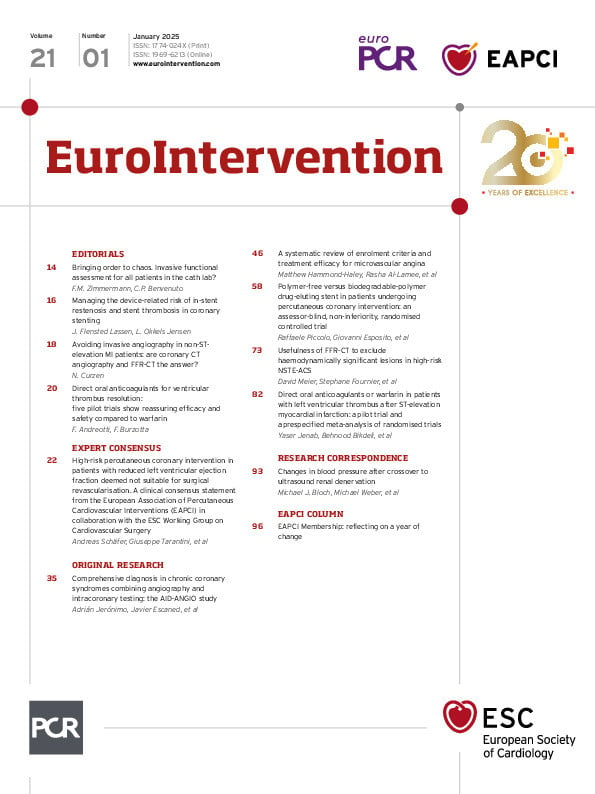Over the past decades, the toolbox of the interventional cardiologist has expanded significantly to assess the heterogeneous nature of chronic coronary syndrome (CCS). Beyond epicardial disease, several subtypes of angina with non-obstructive coronary artery disease (ANOCA) have been identified, including microcirculatory and vasomotor dysfunction12. While these advancements are essential for clinical research, they add complexity to daily practice. The growing array of diagnostic tools raises an important question: how do we decide which tool to use and when? For example, selecting patients who will benefit most from microcirculatory assessment is a challenge that varies widely across hospitals, further complicating the adoption of standardised protocols.
With this background, we read with great interest the study by Jerónimo et al in this issue of EuroIntervention3. The authors propose a comprehensive ‘one-stop shop’ algorithm for evaluating a broad population with chest pain in the cath lab3. They enrolled 317 consecutive patients with chronic coronary syndrome referred for invasive coronary angiography and applied a hierarchical algorithm for invasive functional assessment. Their hierarchical protocol first identified >90% stenoses on the angiogram and...
Sign up for free!
Join us for free and access thousands of articles from EuroIntervention, as well as presentations, videos, cases from PCRonline.com




